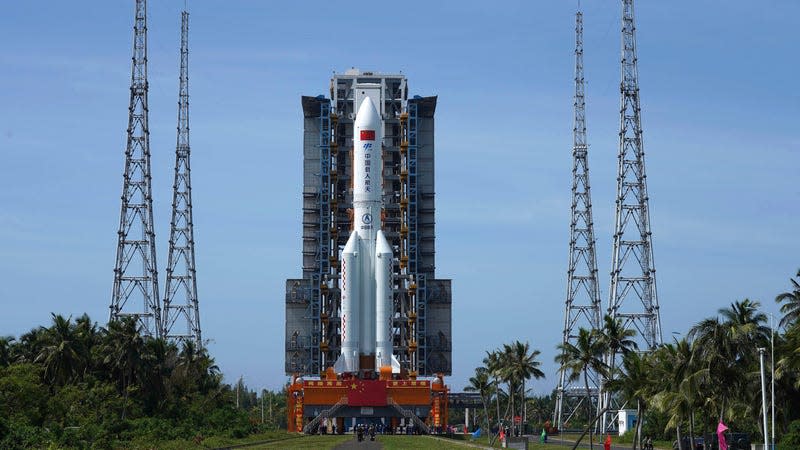Chinese Rocket Stage Now a Cloud of Orbital Debris After Disintegrating in Space

On November 12, China’s Long March 6A rocket broke apart after launch, scattering debris in low Earth orbit. Now, reports suggest that the disintegrated upper stage of the rocket has grown to a cloud of 350 pieces of space debris.
The rocket launched at 5:52 p.m. ET on November 11 from Taiyuan Satellite Launch Center in north China, carrying the Yunhai 3 environmental monitoring satellite.
Read more
Shortly after delivering the satellite to low Earth orbit, the upper stage of the Long March 6A rocket broke apart, the South China Morning Post reported at the time. The U.S. Space Force’s 18th Space Defense Squadron tracked 50 pieces of space debris resulting from the rocket’s break up at an estimated altitude of 310 miles to 435 miles (500 to 700 kilometers), the squadron announced on November 13.
Nearly a month later, experts are still tracking the disintegrated pieces from the rocket. “There are now 350 debris objects cataloged from the Nov 12 disintegration of a Chinese rocket stage (CZ-6A Y2), in sun-sync orbit,” Jonathan McDowell, an astronomer at the Harvard-Smithsonian Center for Astrophysics, wrote on Twitter based on ongoing tracking by the Space Defense Squadron.
There are now 350 debris objects cataloged from the Nov 12 disintegration of a Chinese rocket stage (CZ-6A Y2), in sun-sync orbit pic.twitter.com/D6qAOwkbpN
— Jonathan McDowell (@planet4589) December 8, 2022
China has been reckless with its rockets before, but the Long March 6A rocket breakup wasn’t meant to happen. The rocket’s upper stage was supposed to reenter Earth’s atmosphere in one piece, and burn up during reentry. It’s not clear what went wrong to cause the rocket to break up before its reentry.
The rocket breakup sent debris flying near Starlink’s internet satellites, but Chinese officials are claiming that pieces of the rocket will not threaten other low Earth orbit assets. “As far as we know, the relevant incident will not affect the Chinese space station or the International Space Station,” Mao Ning, spokesperson for China’s Foreign Ministry, is quoted in the South China Morning Post as saying during a press conference.
As of last year, more than 27,000 pieces of space debris were being tracked in orbit by the Department of Defense’s global Space Surveillance Network, with lots of smaller pieces also floating around undetected.
More: Science Satellite Dodges Threatening Space Junk on Just 8 Hours Notice
More from Gizmodo
Sign up for Gizmodo's Newsletter. For the latest news, Facebook, Twitter and Instagram.

